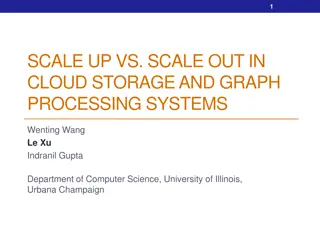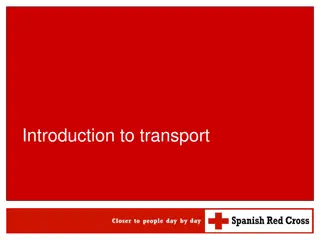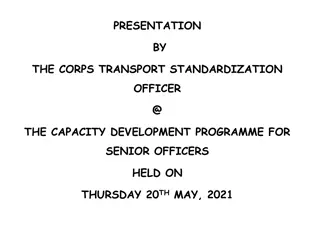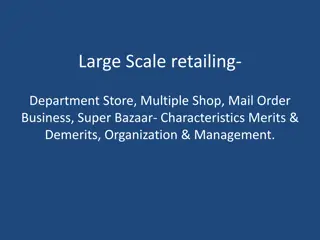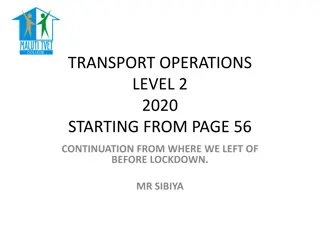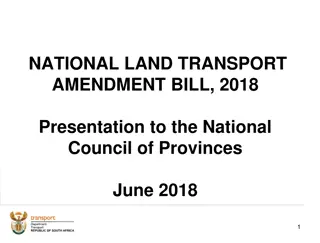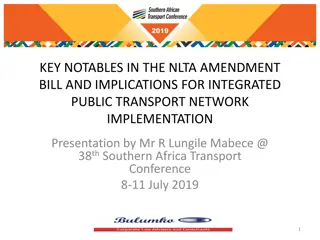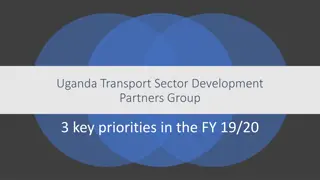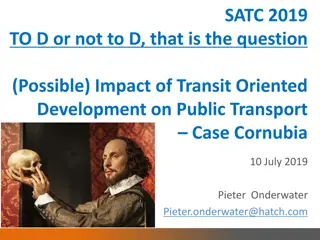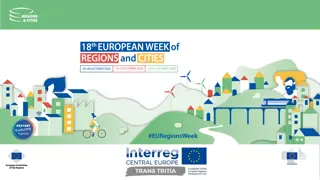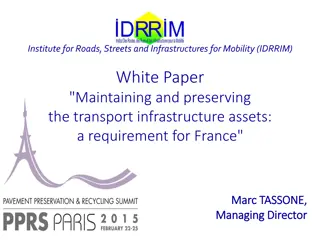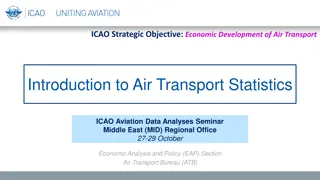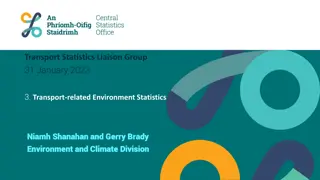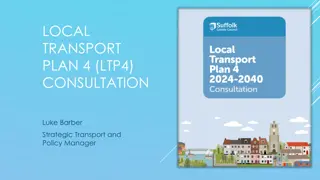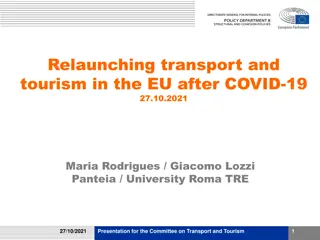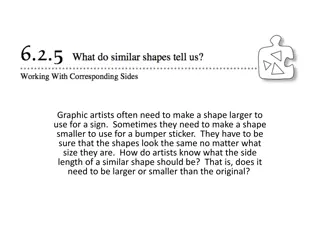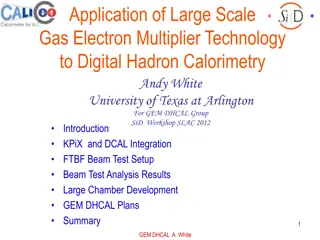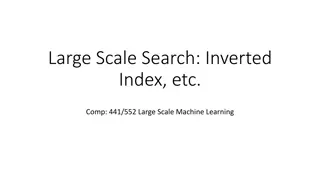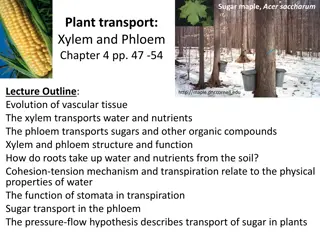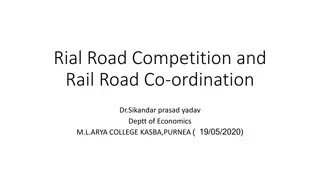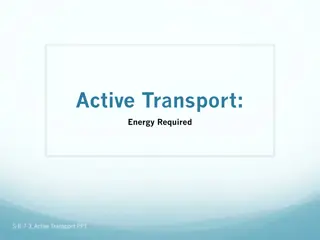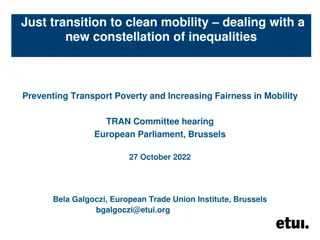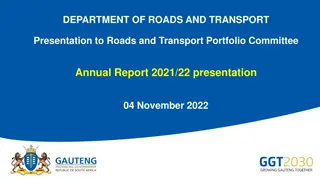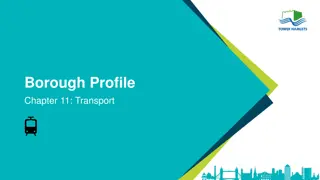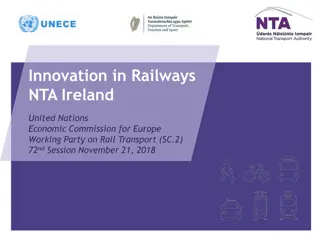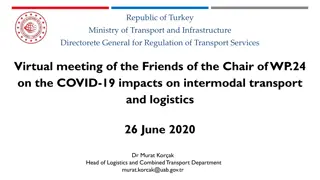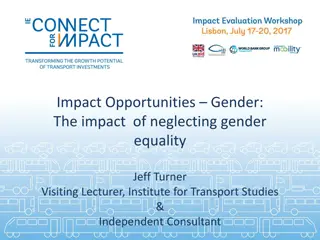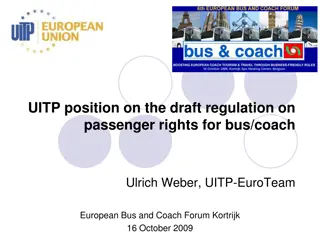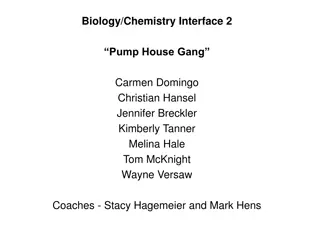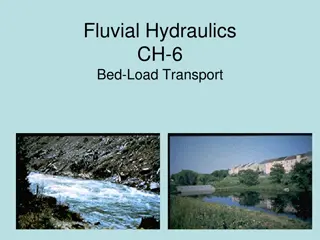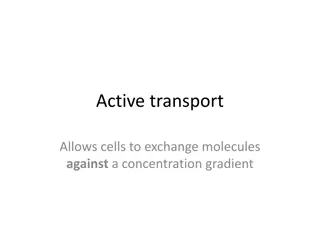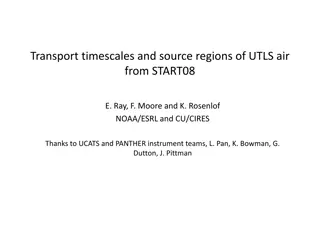Effective Data Transport Strategies for Large-Scale Operations
Explore strategies for efficient data transport in large-scale operations, emphasizing moving towards more extensive data types, ensuring security, transparency, and manageability. Detailing transport options like (S)FTP(s) and HTTP(s) while prioritizing simplicity and flexibility. Considerations for minimizing server code, enhancing scalability, and addressing challenges with large data trees.
Download Presentation

Please find below an Image/Link to download the presentation.
The content on the website is provided AS IS for your information and personal use only. It may not be sold, licensed, or shared on other websites without obtaining consent from the author. Download presentation by click this link. If you encounter any issues during the download, it is possible that the publisher has removed the file from their server.
E N D
Presentation Transcript
Pub/Sub File Trees for WIS 2.0 Briefing for WMO - ET-CTS Meeting Buenos Aires February 2019 Peter Silva
WIS 2 Should Move More, Larger Data Types important data sets are much larger. Earth Observation Satellite Meteorological Radar Meteorological/Environmental Observations (many types) Aviation Forecasts (ASCII & XML) NWP Model products (.grib, .hdf, NetCDF, etc ) CAP Warnings can embed media (complex type, large.) Non GTS exchanges dwarf GTS No longer only small text files Formats vary over time (relatively quickly) 2
With good security, Minimize amount of server code to review Use common, widely available services. Already audited by others. Preferably no write access others servers. Each member writes to own server only. Connect to remote server as read-only guest 3
Transparency, and Manageability Also! well-known APIs: browsers, CLI clients, libraries. Use available open source solutions. File transport is solved problem: http, sftp But could evolve. Ease of inspection Simple tools to browse members servers. 4
large scale means as simple as possible B2B, high volume, real-time visual appeal not a concern Wholesale vs. retail data transfer Least complex technology to solve the problem minimize compute/io/network bandwidth Flexible: if new data types added, add folders. browse without downloading. Sovereign domestic service 5
One transport option: (S)FTP(s) Strengths: open source servers available. folders are simplest API. Well-known, very easily scaled for retrieval. Weaknesses large/deep trees too expensive (not used.) Authentication complicates interactions. ls/fetch cycle limited performance. 6
Another transport Option: HTTP(s) Strengths: Many open source web servers available. Web accessible folders simplest API. Very easily scaled for retrieval. Works well with anonymous access Weaknesses large/deep trees expensive to walk Hard to know what is new without walking Hard to know what is old without walking. 7
Efficient Large Trees Need Time & Pub/Sub Motivated by Operational Met Service Production and Dissemination Organize tree by time for efficiency of all: Current users look in current data. Cleanup processes examine smaller tree. Retention policy obvious from root of tree. Notification Layer Client subscribe to interesting parts of the tree. Do not need to walk it. 8
Avoid walking trees by using Pub/Sub. Notification topic hierarchy reflects file one. Subscribe to parts of trees. Server-side filtering limits notice volume. Very low latency notice forwarding. Notification Layer Client subscribe to interesting parts of the tree. Do not need to walk it. 9
How to Pub/Sub: Choices Many technologies exist. RSS/Atom, Web sockets, XMPP/Jabber, MQTT promising now! STOMP, AMQP 1.0 (socket protocols) Many others (RTMP, DDS, PubNub, SSE...) AMQP ( 0.8 and/or 0.9.1 ) best in 2008! Looked for option with least server-side code required (most built-in support.) 10
AMQP <= 0.9.1* (RabbitMQ, Qpid, others) Messaging Swiss Army Knife Supports many communication patterns Wide adoption by many different industries. Very robust in practice. Deployment simplifications for this use. only topic-based exchanges zero (0) server-side code. Unmodified broker is the server. 11
AMQP <= 0.9.1 Concepts Brokers: AMQP server (user permissions, CRUD of Exchanges, Queues, and Bindings.) Publishers send messages to Exchanges Consumers get messages from Queues. Bindings select a subset of messages on an exchange to be placed in a queue . Exchanges and Queues can be used by multiple producers and consumers. 12
AMQP (<1.0) Exchange Types fanout (1:N), Direct (1:1) Topic (pub/sub)
The pub/sub Mesh Algorithm Web server with date-indexed tree. local/national files uploaded to local server. Local server is both web server and message broker. Message posted locally for each file. Peers subscribed, see file, might download If downloaded, post locally for their peers. If everyone does it, we end up with a shared tree. 15
Slightly Lower Bandwidth Costs? GTS is implemented over RMDCN Logically point to point, physically star. Links are symmetric (upload/download speeds) RTH s need more bandwidth to feed their clients Mesh distributes uplinks among peers uplink of most peers is less used (but costs!) Peers uplink more, RTH less. May reduce cost of network, on the whole. At least will distribute more fairly. 17
Status of Sarracenia (pub/sub on AMQP) deployed on about 100 servers (but not in a mesh) Apache/httpd, OpenSSH & RabbitMQ. Deployed on Linux, many other uses cases Ubuntu 12.04 18.04 Python 3.2 3.7 A little more work for: redhat/centos/suse 18
Next Steps for Canadian Stack (Sarracenia) AMQP 0.9 works well without server-side code. Continue decommissioning old services HPC Mirroring v2 V03 (pure JSON) data format: Fixes 255 character limit AMQP headers Compatible with MQTTv3X Prototype in Sarracenia v2.19.01b1 MQTT? ( https://github.com/MetPX/wmo_mesh ) 21
Questions Agree on approach?: distribute a common tree with pub/sub. Begin work to settle on a common tree Starting point: YYYYMMDDHH/CCCC/TT/<normal file_name> TT could gradually expand to things like satellite/, radar/, global_ensemble/ (not that such data would circulate there, but common mechanism helps.) 22
Thanks! The End Sample: http://hpfx.collab.science.gc.ca/~pas037/WMO_Sketch/ 23
Mapping AMQP to MQTT AMQP Term Exchange MQTT Term Root of topic hierarchy Description Defining a name space for messages. Queue Client-Id Stores connection state. Bind Subscribe Define topics of interest to a subscriber. Sarracenia use of AMQP for pub/sub maps easily to MQTT Messages, topics, subscribers, publishers terminology the same.
Sample v03.post Notice 20190115224253.926 http://dd5.weather.gc.ca /hydrometric/csv/AB/hourly/AB_05AH025_hourly_hydrometric.csv headers={ 'to_clusters': 'DDSR.CMC,DDI.CMC,CMC,SCIENCE,EDM', 'atime': '20190115224253.926', 'from_cluster': 'DDSR.CMC', 'mtime': '20190115224253.926', 'sum': 'd,d48d9f2ece1658b09002d503620ae378', 'source': 'WXO-DD', 'parts': '1,38919,1,0,0'} 25
Bio. In charge of CWAO WMO switch since 2001 In 2004 started replacing WMO switch software: 450 kloc Tandem app for WMO message switching 50 kloc UNIX app in C for file switching. Replacement (2007): MetPX Sundew Built-inhouse by careful study of WMO-386 Blackbox reverse engineering. Gen 1 WMO switch & file switch (& AFTN) 25 kloc python script on Linux (98% less code) 26
Bio (2) Sundew replaced X.25 WMO link with a TCP/IP one. 2008, looking at pub/sub. Settled on AMQP as an experiment. Rolled out to public datamart as experimental service 2010, initial mesh for redundant RADAR production. 2013 Sarracenia: pub/sub with AMQP. ground-up re-write. 16Kloc (30% code reduction) Incremental DevOps deployments. 2018 initial feature complete version. 27
Traditional GTS (WIS 2 seeks to replace) Nodes: NC/RSMC/RTH National Centres, Regional Specialized Meteorological Centre, Regional Telecommunications hub. NC->RTH->RTH->NC (communications required to add data between two countries in different regions.) No official distribution outside WMO members. Data types defined (restricted?) by WMO-306 Communications standards by WMO-386 (renamed?) Very obsolete, mostly unneeded. 28
GTS at CWAO evolution over past 20 years 2006 GTS sockets X.25 -> TCP/IP 2008 Eliminated segmentation (still not done.) Maximum size 14,000 --> 500,000 bytes (still in progress) Convention for bucketing (grouping files.) UKMET exchange uses buckets 2010 naming conventions for FTP exchanges. 2015 migration to SFTP over Internet for NWS. non-standard file names, shallow tree with delete. 29
CWAO Important File Exchanges (non GTS) Almost always one-off bilateral arrangements. Participation in TIGGE & NAEFS Subscription to US PDA (deep file tree, hard to do efficiently, no delete.) Almost all internal data distribution (use Sarracenia) GOES, HRPT, raw and processed RADAR volume scans and products Model outputs in GRIB and FST. Public data mart ( dd.weather.gc.ca ) Volume completely dwarfs GTS. 30
Aspirations: GTS should not be Special File exchange is more important than GTS today. Most organizations do not support pub/sub. File exchanges require inefficient polling. Many odd things done to get around that. Many bilateral arrangements different for no reason. Most do not understand anything better is possible. Evolution in Aviation Telecom: CWAO still has an AFTN (over TCP/IP) Being asked to look at AMHS (OSI, yuck!) AMQP 1.0 (yuck!)... simpler pub/sub better! 31
Aspirations 2: Pub/Sub broader than GTS Identical methods can be used to disseminate a wide variety of scientific data, to a much wider audience. My mandate includes: Astronomy, Genetic, and other data sets. Hope to use same stack. Directory tree convention is specific to GTS. GTS used to be inadequate, with working standard Could approach others to have file exchanges use it. For MQTT in particular, data acquisition is now called IOT. Acquisition and exchange could have common basis. 32





